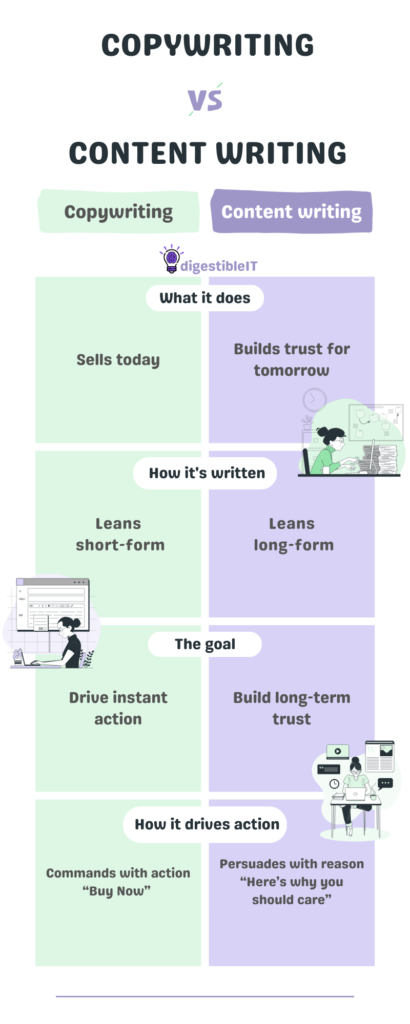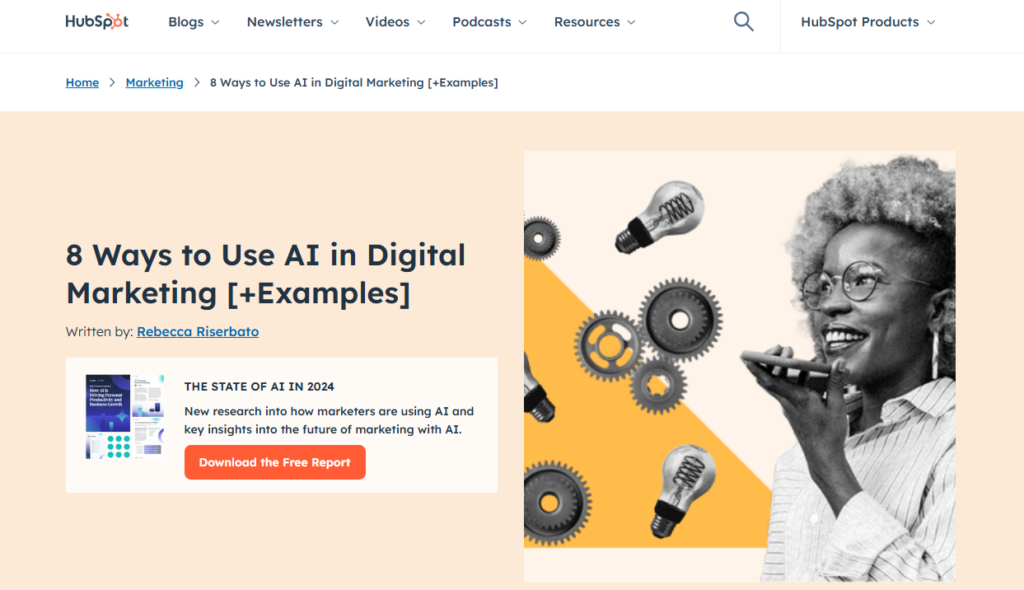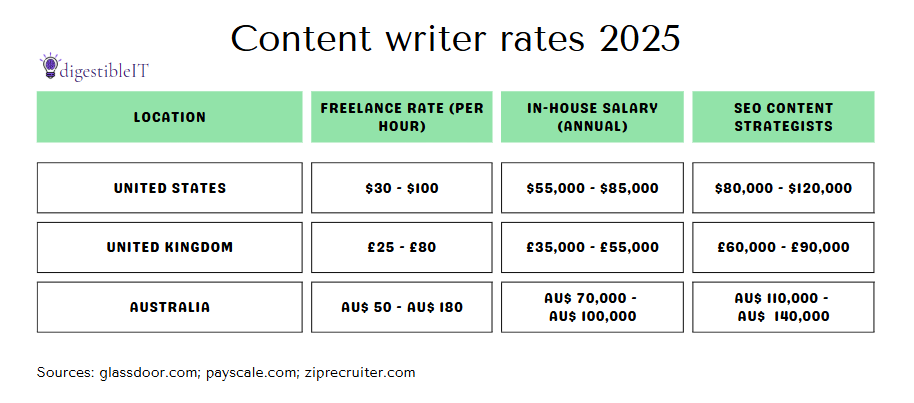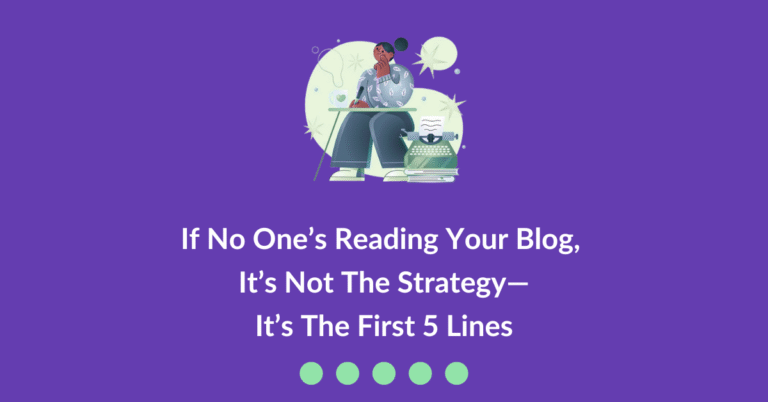Last updated: March 18, 2025
Businesses keep hiring the wrong writers—wasting time, burning money, and wondering why ROI goes up in smoke. This mismatch tanks engagement, kills conversions, and leaves brands stuck.
Both copywriters and content writers craft messages for specific audiences, but their goals? Completely different. Copywriting drives immediate action—think product pages, Facebook ads, and email funnels. Content writing builds authority and trust through in-depth blog posts, whitepapers, and how-to guides.
Whether you’re creating content or hiring a professional, one thing’s clear—fancy words don’t matter. Results do. The right message, crafted by the right expert, can either double your conversions or send your audience scrolling.
Yet, too many businesses and writers get it wrong, leading to wasted budgets, missed opportunities, and content that doesn’t convert.
By the end of this guide, you’ll know exactly who to hire or how to craft content that drives revenue and earns trust.
Before we dive in, let’s nail down the fundamentals.
Table of Contents
ToggleWhat is copywriting?
Nike’s ‘Just Do It.’
Apple’s ‘Think Different.’
These aren’t just slogans. They’re strategic copywriting in action.
Copywriting isn’t just words—it’s persuasion. It grabs attention, stirs emotion, and drives immediate action.
Without a strong copy, even the best products struggle to sell.
Copywriting has a short-term, direct goal–generating sales.
Copywriters tap into emotions to drive action because, whether we realize it or not, emotions shape every decision we make. The copywriter’s job is to connect with the reader’s emotions and make it easy for them to take immediate action.
Instead of emphasizing what some product does, copywriting highlights how having that product will make you feel.
For example, instead of saying “This mattress has memory foam,” great copywriting says, “Sink into cloud-like comfort and wake up pain-free, refreshed, and ready to conquer the day.”
By focusing on the end benefit (pain-free mornings), copy taps into the customer’s desires and emotions, making the sale feel natural rather than forced.
Copywriters write:
- Advertisements (Magazine, TV, Radio, PPC)
- Landing pages (Sales pages, Product pages, PPC pages)
- Marketing materials (Press releases, Brochures, Billboards)
- Sales copy (Sales emails, Taglines, Video scripts)
- Social media ads (Paid campaigns, Sponsored posts)
Great copywriting doesn’t describe, it makes you feel. That’s what drives action.
While copywriting pushes for instant action, content writing plays the long game. Let’s break it down.
What is content writing?
Content writing educates and builds trust. Think of HubSpot’s blog posts or Google’s SEO guides—insightful, actionable, and built for long-term engagement.
Content writing is designed to influence a potential sale, but the bigger goal is sharing valuable information about a product or service with the ideal customers.
Content writers craft engaging narratives that resonate with readers and strengthen brand trust.
Content writers write:
- Articles & Blogs (SEO articles, Thought leadership blogs, Guest posts)
- Long-form resources (Whitepapers, E-books, Case studies)
- Educational content (How-to guides, Tutorials, Knowledge base articles)
- Branded storytelling (Advertorials, Brand journalism pieces)
- Audio & Video scripts (Podcast scripts, Video content outlines)
- Organic social media content (LinkedIn posts, Twitter threads, Community-driven content)
Content writing nurtures trust. It’s about building relationships, not just clicks.
Now that we know the basics, we can jump into the key differences between copywriting vs content writing.
Copywriting vs content writing differences
Both copywriting and content writing are business essentials—content writing nurtures while copywriting converts.
Here are some of the key differences between copywriting vs content writing:

Intent
Copywriting and content writing are primarily distinguished by intent.
While both are created for marketing purposes, copywriting intends to sell or convert, while content writing intends to inform, inspire, or entertain.
Copywriting sells today. Content writing builds trust for tomorrow. One sparks immediate action, the other nurtures long-term loyalty.
Format
Short-form copy hits fast—ads, emails, taglines. Long-form copy, like sales pages, wins through depth. Both have their place.
A Facebook ad (short-form) persuades in seconds. A detailed product guide (long-form) nurtures a lead over time. Both are essential—knowing when to use each is the key.
David Ogilvy, ‘the father of advertising,’ proved that when long-form copy is compelling, people will read every word.
How to choose the format of your copy? Test, test, test. Run A/B tests on short vs. long copy for the same offer. Track engagement and conversion rates to see what resonates.
Market, product, and audience dictate length.
Content writing leans long-form. It educates, engages, and builds trust. But short-form content also works when readers want quick answers.
Short-form = under 1,000 words.
Long-form = 1,000+ words, built for SEO and authority.
Recommended read: How to Format a Blog Post in 7 Easy Steps
Goal
Copywriting commands: “Buy Now.”
Content writing persuades: “Here’s why you should care.”
One drives instant action, and the other builds long-term trust. Both move the reader—just at different speeds.
Both copywriting and content writing are powerful, but knowing when to use each is the difference between marketing that converts and marketing that fades into noise.
Now that we’ve covered their differences, let’s explore where these two writing styles overlap.
Copywriting vs content writing similarities
Different intent. Different execution. Yet, copywriting and content writing share a common foundation.
Both content writing and copywriting contribute to business growth, with content focusing on trust-building and copy driving immediate action. Ultimately, both serve to convert customers and increase sales.
Besides the ultimate goal, copywriting and content writing have many other similarities, like:
- Conducting extensive research to ensure their messaging aligns with audience needs and industry trends
- Conveying a specific message to a specific audience
- Increasing brand awareness and building brand trust
- Using compelling storytelling to captivate their audiences
- Including strong hooks and CTAs
- Targeting and optimizing for specific keywords
- Creating catchy headlines
Both copywriters and content writers also use SEO to improve their writing’s reach and impact.
While content writers rely on it for organic traffic, copywriters can enhance their work by aligning with keyword research and search intent optimization.
A solid SEO foundation helps both roles create content that reaches the right audience.
Killer examples of copywriting and content writing
Want to see conversion copywriting in action? Look no further than Alex Cattoni’s Inbox Income sales page.

This sales page is a masterclass in direct-response copywriting, using persuasion techniques that hook the reader, build trust, and drive conversions.
Why this sales page converts like mad:
- A bold, benefit-packed headline grabs you instantly.
- Emotional triggers and pain points make the offer irresistible.
- Trust-builders: social proof, testimonials, and a no-risk guarantee.
- A well-structured offer breakdown justifies the price.
- A clear, no-fluff CTA makes saying ‘yes’ easy.
Inbox Income is a textbook example of a high-converting sales page. It follows every proven copywriting principle while maintaining a conversational, engaging tone. This isn’t just good copy, it’s conversion science in action.
Next, let’s analyze Hubspot’s AI in marketing blog post as a perfect example of strong content writing that combines SEO optimization, reader engagement, and value-driven insights (click the link to open the blog post so you can analyzee it).

It is structured in a way that educates, builds authority, and ranks well on search engines.
Why this blog post works well:
- SEO-optimized without feeling forced – Uses keywords naturally, not overstuffed.
- Engaging and well-structured – Short paragraphs, bullet points, and subheadings improve readability.
- Data-backed and value-driven – Statistics, research, and expert insights add credibility.
- Internal and external links keep readers engaged – Smart linking improves SEO and retention.
- Strong CTA that moves readers forward – A clear “next step” ensures engagement continues.
HubSpot’s blog post is a great example of effective content writing. It blends SEO, clear format, and data-driven insights while keeping the tone engaging and easy to read.
Copywriting vs content writing: which one should you choose?
Copywriter or content writer, which path suits you? Let’s break it down.
Copywriting is for you if:
- You enjoy psychology and the art of persuasion
- You love crafting messages that drive immediate action
- You thrive in fast-paced, deadline-driven environments
- You prefer short-form, results-oriented writing
- You like experimenting with different approaches to improve conversions
- You enjoy analyzing data and A/B testing to refine messaging
- You find satisfaction in seeing direct sales impact from your writing
How to get started:
- Learn direct-response copywriting (start with Ogilvy on Advertising)
- Practice writing ads, sales pages, and emails
- Take courses on CRO and persuasive writing
Content writing is for you if:
- You enjoy deep research and storytelling
- You love writing long-form, educational content
- You thrive in structured, strategy-driven environments
- You prefer creating value-driven content that builds audience trust over time
- You like optimizing content for SEO and organic search rankings
- You enjoy structuring narratives and engaging readers through detailed insights
- You find satisfaction in helping brands build authority through informative content
How to get started:
- Learn SEO and blogging strategies (Google’s SEO Starter Guide is a good start)
- Build a portfolio of blog posts, whitepapers, and case studies
- Take courses on SEO and content strategy
Not sure? Start with content writing to build trust. Master copywriting to drive sales. The best writers? They do both.
What skills and tools do you need for copywriting and content writing?
To excel, copywriters and content writers need a combination of hard skills and soft skills. While there is some overlap, their core skill sets differ based on their primary goals.
Let’s take a look at them:

Tools for copywriters and content writers
Great writing isn’t just about creativity. It’s also about clarity, strategy, and optimization.
Copywriters need tools that help refine messaging, track engagement, and test variations to maximize conversions.
Content writers rely on research, SEO, and readability tools to ensure their work is both valuable and discoverable.
Whether you’re crafting persuasive ad copy or writing long-form blog content, having the right tools can make all the difference.
Writing and editing tools
These tools help ensure clarity, conciseness, and proper grammar in both persuasive and long-form writing.
- Grammarly – Essential for grammar, spelling, and tone adjustments. Helps refine copy for better readability and professionalism.
- Hemingway Editor – Highlights complex sentences and passive voice, making writing clearer and more impactful.
- Google Docs – The go-to tool for drafting, collaborating, and organizing written content.
SEO and research tools
SEO tools help writers craft content that ranks higher, reaches the right audience, and stays relevant over time.
- Google Analytics: Reveals what content performs best, helping writers double down on high-traffic topics.
- Google Search Console: Uncovers keyword rankings and search queries, allowing content adjustments based on real audience search behavior.
- Ahrefs and SEMrush: Identify high-value keywords and competitor gaps, helping writers craft content that outperforms existing articles.
- AnswerThePublic: Generates content ideas by showing real-world search queries, ensuring blog posts answer audience questions directly.
Great SEO isn’t just about ranking. It’s about answering the right questions better than anyone else.
For example, Ahrefs helps uncover content gaps, while AnswerThePublic shows real-world search intent, both critical for crafting content that ranks and resonates.
Conversion and analytics tools
Copywriters need tools to track engagement, test variations, and refine persuasive messaging.
- Hotjar – Provides heatmaps and session recordings to show how users interact with a landing page. Helps improve conversion rates.
- CoSchedule Headline Analyzer – Scores headlines for engagement and effectiveness, ensuring copy grabs attention.
- A/B Testing Tools (Google Optimize, Unbounce, Optimizely) – Essential for testing variations of sales pages, CTAs, and ad copy to see what converts best.
Plagiarism and readability tools
Ensuring originality and readability is crucial for both content and copywriting.
- Copyscape – Checks for plagiarism to ensure all content is unique.
- Readable.com – Analyzes readability scores and suggests improvements for better comprehension.
Content planning and organization tools
Writers need tools to manage research, plan content strategies, and streamline their workflow.
- Notion or Trello – Helps with content planning, editorial calendars, and workflow management.
- BuzzSumo – Identifies trending topics and high-performing content to inspire new ideas.
Mastering these tools is essential for any content or copywriter looking to improve efficiency, effectiveness, and results.
Do you need to hire a copywriter or content writer?
Hiring managers—choosing the wrong writer can cost you leads, sales, and engagement. Here’s how to decide:
Hire a copywriter if you need:
- Sales-focused content (ads, landing pages, email funnels)
- Immediate conversions
- Persuasive storytelling for product launches
Where to find copywriters:
- Freelance platforms
- Job boards
- Direct outreach (LinkedIn, X, cold emails)
- Agencies specializing in conversion copywriting
Rates: Entry-level copywriters charge $50–$150/hr.; top-tier ones go up to $500/hr.
Hire a content writer if you need:
- SEO blogs, whitepapers, case studies
- Long-form content for audience education and engagement
- Brand storytelling and thought leadership
Where to find content writers:
- Blogging platforms (ProBlogger, Contently, Medium)
- Social media (LinkedIn, X, Instagram, etc.)
- SEO agencies and marketing firms
- Job boards for in-house roles
Rates: Entry-level content writers charge $20–$50/hr.; experienced ones up to $150/hr.
Need both? Many hybrid writers specialize in both SEO-friendly blogs and high-converting sales pages.
FAQs
1. Which is more in demand in 2025: copywriting or content writing?
As of 2025, both fields are growing, but in different ways:
- Copywriting demand is rising, particularly for email marketing, landing pages, and AI-assisted ad creation. Brands are focusing on high-converting copy that works alongside AI-generated content.
- Content writing remains essential, especially for SEO-focused, thought leadership, and long-form content that builds authority. However, AI tools like ChatGPT and Jasper have made entry-level content writing more competitive.
Learning both SEO-driven content writing and conversion copywriting gives you a competitive edge and opens more opportunities.
2. How much do copywriters and content writers earn in 2025?
The earnings for copywriters and content writers vary depending on experience, location, and specialization.
Below are the average salaries for the U.S., U.K., and AUS for 2025.
Copywriter rates (2025)

Content writer rates (2025)

Copywriters generally earn more per project because of their role in direct revenue generation, while content writers earn well when they specialize in SEO and thought leadership.
3. Can AI replace copywriters and content writers?
AI tools streamline drafting and research. But creativity, brand voice, and strategic storytelling? That’s still human territory.
AI generates words, but it doesn’t think strategically, understand brand voice, or build emotional connections—all crucial for persuasive and engaging writing.
The best writers don’t compete with AI, they use it to work smarter and write stronger.
4. What niches are the most profitable for copywriters and content writers?
Some industries pay significantly higher rates due to specialized knowledge and high ROI. Here are the most profitable niches in 2025:
- For copywriters:
- Direct-response marketing (email funnels, landing pages)
- SaaS (software) and B2B tech sales copy
- Finance and investment-related copy
- Healthcare and medical sales pages
- For content writers:
- SEO-focused finance and legal content
- Long-form SaaS and AI-related guides
- Thought leadership content for executives
- Case studies and data-driven reports
Writers specializing in high-value industries (tech, finance, healthcare) demand premium rates. Mastering SEO or conversion-focused writing within these niches can significantly increase your earning potential.
Let’s digest it
Copywriting drives action. Content writing builds trust. One drives instant conversions, the other nurtures long-term loyalty. Both are essential, but knowing when to use each is the difference between a brand that thrives and one that fades into the noise.
The best businesses and the best writers master both.
Hiring? Choose wisely. Writing? Know what you offer. Because the right words don’t just inform or sell. They build brands that last.
Ema is a writer, editor, and content strategist with 10+ years of experience. She helps brands turn vague traffic goals into content that connects, not just ranks.



